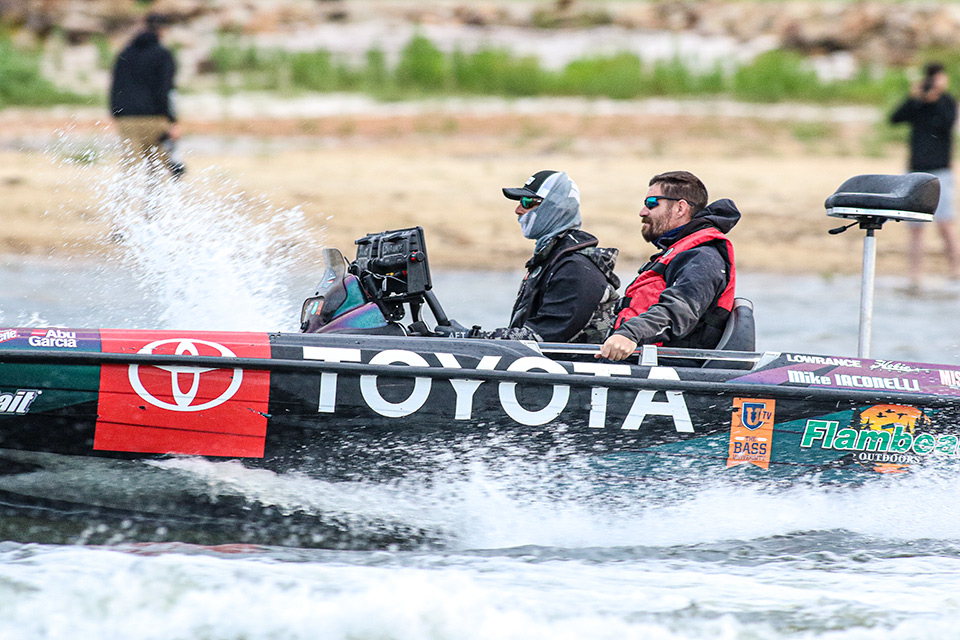
The Bassmaster Elite Series tournament on the Delaware River in 2014 is one of the most challenging and rewarding events I’ve ever fished. It was held in Philadelphia, just across the river from New Jersey, my home state. I won the event with 47 pounds, 14 ounces. The river proved so stingy that no other angler managed to sack 40 pounds.
I felt right at home there because Philadelphia is my birthplace. I was fishing the Delaware River from the bank with my uncle and grandfather when I was only 2 or 3 years old. When I later got hooked on bass fishing, I learned how to coax bites from the abundant manmade cover on this tidal river.
In the Elite tournament, I fished things like pilings, seawalls and old beat-up docks. I caught 80% of my bass on a prototype compact jig made by Missile Baits, which would later be dubbed the Mini Flip Flipping jig. I dressed the hook with a brown, purple and cinnamon colored Berkley Powerbait Crazy Legs Chigger Craw.
I’ve long been a proponent of downsizing my baits when fishing is tough. But over the last five years, compact jigs have become more productive for me than full-size jigs regardless of the conditions.
A compact jig is not the same thing as a finesse jig. Finesse jigs tend to be lighter than standard jigs as well as smaller. A compact jig looks like a shrunken version of a full size jig, but it comes in most of the same weights. The Mini Flip, for example, is available in 1/4-, 3/8- and 1/2-ounce sizes. Those are the main sizes I rely on with full size jigs.
The beauty of that is I don’t have to change tackle when I’m fishing a compact jig. If I’m pitching one around docks, I use the same 7-foot, 2-inch, heavy-action rod I pitch standard jigs with.
A compact jig typically has a smaller profile head, a smaller hook and thinner skirt material. Many of them also have a tone-downed weed guard. I love a compact jig for flipping and pitching because it gets into and out of cover without hanging up as much as a full size jig. I’m actually more efficient with it.
I always downsize the trailer that I put on a compact jig. Instead of the 4-inch trailers I typically use with full-size jigs, I’ll go with the same trailer in a 3-inch version. That’s true whether the trailer is a Chigger Craw, a double tail or a chunk. If you’re in a pinch, you can bite down a 4- or 5-inch trailer.
Compact jigs catch more bass anytime the bite is tough, such as on a bluebird, high-sky day after a cold front. Bass also get finicky due to heavy fishing pressure. Given that our bass are beat on every single day anymore, compact jigs are likely to get more bites than standard jigs anytime you go fishing.
Sometimes bass shun standard jigs simply because they are bigger than what the bass are eating. They may be targeting small bluegills, crayfish or minnows. In this instance, a compact jig does a better job of matching the hatch.
When Missile Baits came out with the Mini Flip Flipping Jig in 2014 only a few companies were making true compact jigs. A dozen or more companies now make them in flipping, casting, swimming and football versions. Fish them the same way you fish standard size jigs and they’ll often produce more bites for you.
You can learn more about what I do with compact jigs and other rigging techniques at www.mikeiaconelli.com or www.youtube.com/c/goingike.





